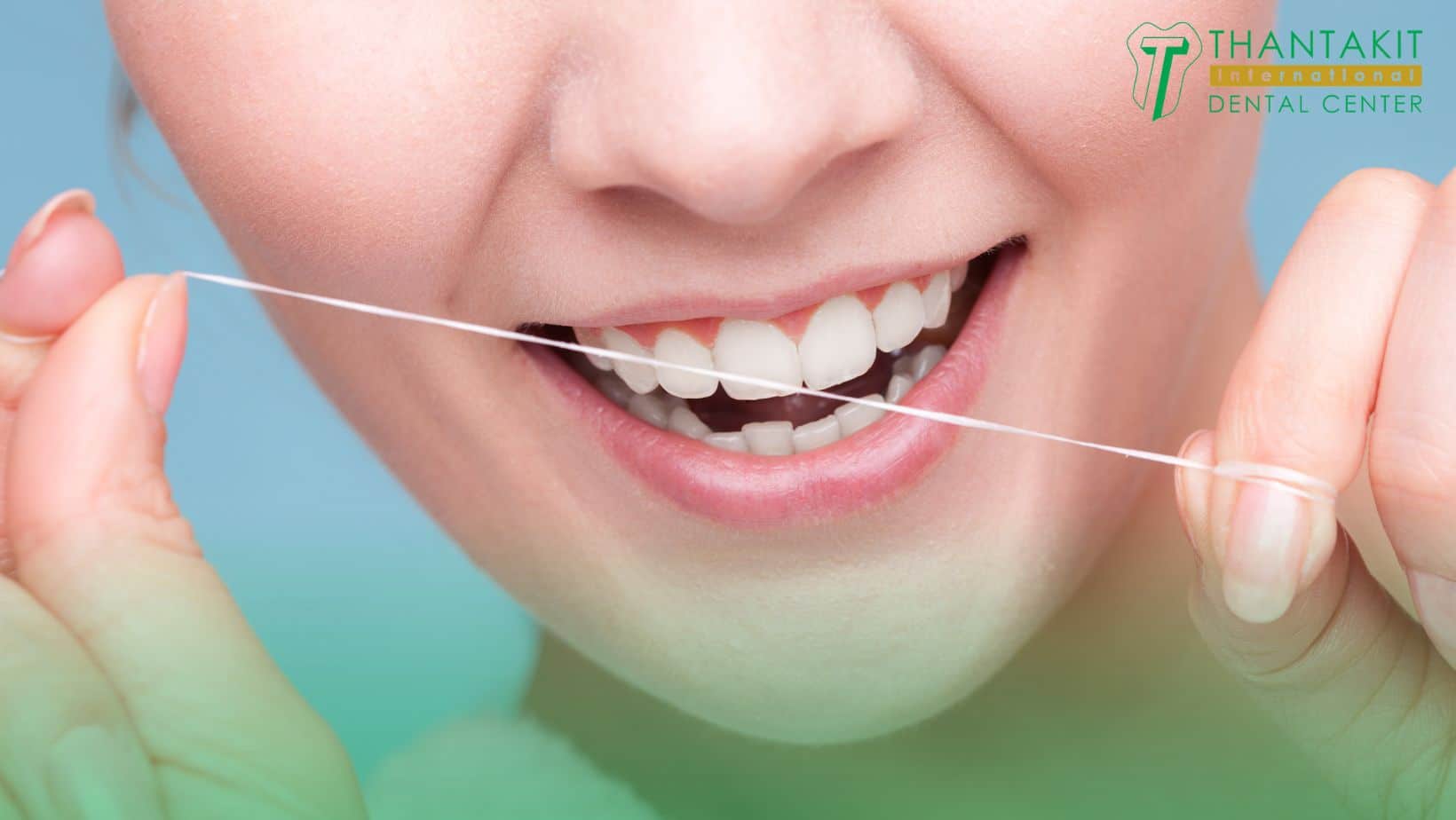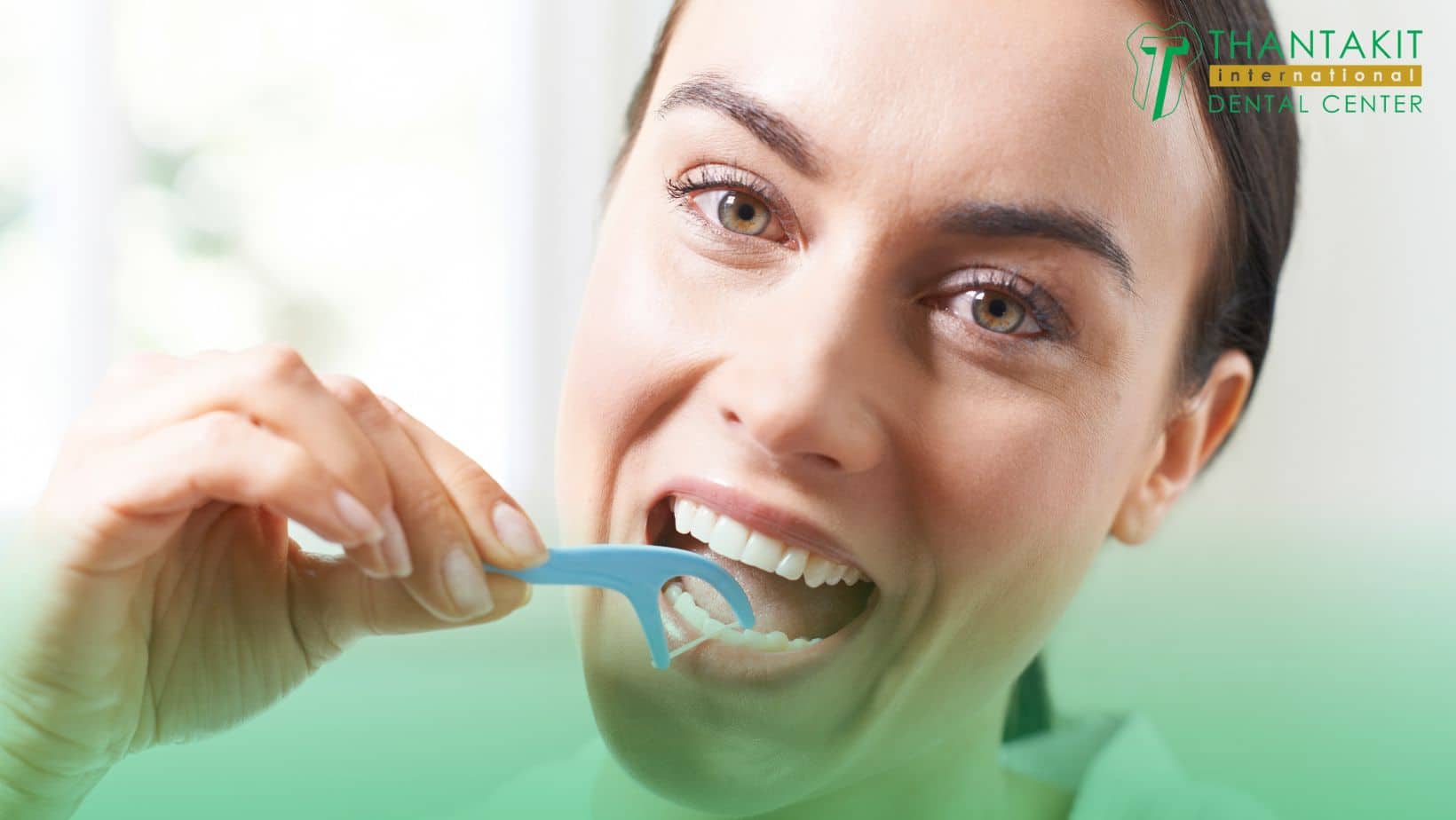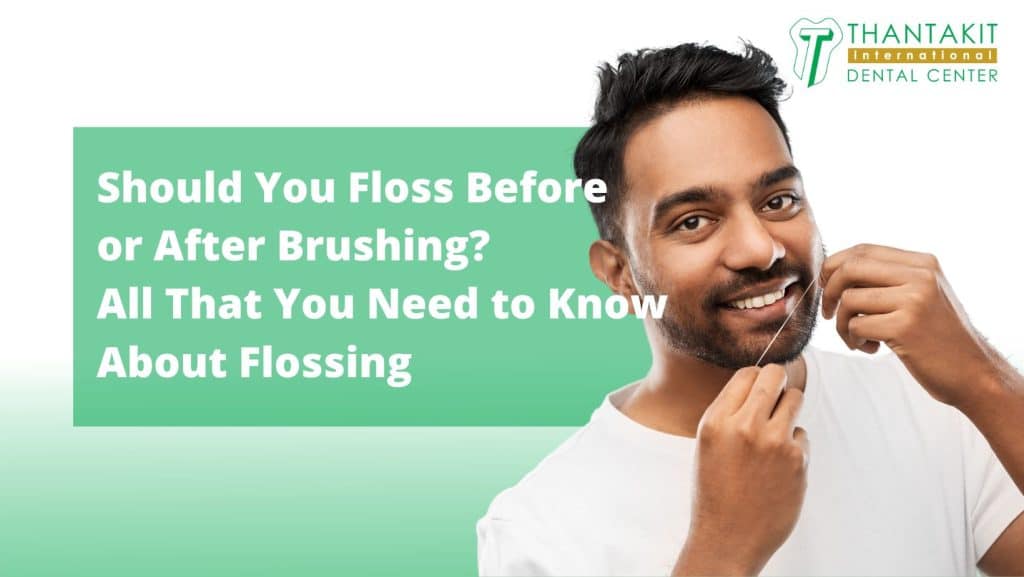Dental hygiene is so important that common sense itself will compel you to keep at it. No need for us to tell you what to do because the consequences of bad hygiene can become apparent as soon as your first meal of the day (such as halitosis).
Teeth maintenance and oral hygiene doesn’t only fight halitosis (bad breath). It also prevents issues such as gingivitis (gum disease) cavities (dental caries) and ensures your teeth are pearly white.
With that in mind, what’s the best way to clean your teeth? Do you floss first then brush afterwards? Or should you brush first then floss what’s left of the food remnants?
Page Contents
Brushing and Flossing 101
Brushing your teeth is just part of what constitutes good dental hygiene. It’s also better than nothing, but you can also do better than just brushing.
Brushing is excellent when it comes to cleaning your teeth, plaque removal, and cavities prevention. However, it has certain limits that are covered by tooth flossing when it comes to preventing gingivitis or gum disease and overall teeth health.
Brushing can also remove food debris and plaque, but brush bristles can’t reach deep into the interdental spaces to remove every last bit.
Flossing before brushing ensures better dental hygiene because it lifts and removes plaque when used properly. Ditto when it comes to picking out stubborn food bits stuck between your teeth.
Flossing keeps your mouth as clean as possible, especially when it’s done properly before brushing, with brushing removing the rest of what you missed.

Should You Floss Before or After Brushing?
According to studies, flossing first followed by brushing seems to be the best course of action. In particular, you should brush with fluoride paste for the best results.
The floss removes the larger bits of food while the toothbrush with toothpaste removes interdental plaque left over from the floss. Apparently, brushing first then flossing second is less effective in interdental plaque removal.
Additionally, flossing before brushing ensures better fluoride retention between your teeth compared to flossing away the fluoride from your toothpaste.
Is Brushing Before Flossing So Bad?
As long as you brush thoroughly then floss on a regular basis, it should be good. The problem is that it’s less effective and misses out on certain areas.
-
Know How to Floss: While we’re at it, you should know how to properly floss as well. Don’t just use the same piece of floss on every line or interdental area of your teeth. You’re just transferring gunk and plaque from one tooth to another.
-
One Piece of Floss at a Time: The proper way is to use one piece of floss per interdental space and tooth. You should also scrape the surface of the tooth with your floss to remove plaque for good measure. Scrape the tooth and then use a fresh piece of floss. Scrape, move, floss.
-
Good Prep for Brushing: Flossing properly and doing so before brushing helps your toothbrush and toothpaste remove less plaque because you’ve already removed it with your floss.
-
Reversing the Sequence: Theoretically, reversing the sequence should yield the same results, but brushing before flossing only results in less effective brushing and incomplete flossing. The toothbrush should finish the whole thing off.
This article will explain why flossing before brushing is the best while also providing tips on how to get the most out of your dental hygiene regimen.
Why Is Flossing Before Brushing Better Than Brushing Before Flossing?
Some people brush before they floss. It’s certainly better than brushing or flossing alone. It’s even much better than leaving your mouth to form plaque and tartar.
-
Flossing Requires Brushing: Any food, plaque, and bacteria released by flossing requires brushing. When you brush, the brush won’t touch the interdental areas. When you floss, they make a mess that requires cleaning.
-
Finish Cleaning with Brushing: You finish cleaning by brushing after flossing. Flossing removes the large bits of film and debris. The toothbrush washes them all away, along with gargling mouthwash.
-
Reverse Sequence is Not as Effective: You have less dental plaque in your mouth when you floss first then brush second. You have more dental plaque in your mouth if you floss second, because brushing usually doesn’t remove that hidden plaque the first time.
-
Interdental Plaque Removal: It’s the interdental plaque removal that’s important when it comes to flossing before brushing with fluoride toothpaste. If you brush first then floss, you’re just letting the bacteria escape with belated flossing.
-
Lower Your Risk of Gum Disease: You’re less likely to develop gingivitis if you floss before you brush. It can also help to floss after you brush, but the preferred method is doing it before brushing.
-
Particle Removal is a Must for Fluoride: According to a 2018 study, particles should be removed first in order for the fluoride in your toothpaste to work better when it comes to protecting your teeth.
-
Should You Floss Before or After Brushing? You should floss and brush in tandem to keep your teeth clean. Remove debris by flossing and most of the plaque then brush away the remnants without brushing too hard on the enamel.
-
More Than Keeping your Breath Smelling Fresh: Hygiene doesn’t only prevent halitosis but also makes sure you’ll have all your teeth intact when you’re older because plaque can destroy your teeth and gums when left unimpeded.
-
Keep That Fluoride In: Brushing after flossing allows your fluoride toothpaste to pack that fluoride in your interdental and dental areas. On the other hand, flossing after brushing your teeth rubs some of that fluoride out.
To reiterate, you floss before you brush to remove interdental plaque, wash away released bacteria, and retain a greater amount of fluoride between teeth spaces when push comes to shove.

Prevents Gum Disease
Let’s now get down to brass tacks. Flossing before brushing can save your teeth from gingivitis or gum disease.
Gum disease, which can progress to periodontal disease, is a mouth infection that destroys the bones and soft tissue that support teeth, thus making them loose over time. This issue happens when your teeth surface has too much bacteria and plaque.
Gum disease signs include the following:
-
Loose teeth
-
Bleeding gums
-
Halitosis (Bad breath)
-
Swollen, red, and tender gums
This can come about due to poor dental hygiene or incomplete brushing. You should floss and brush properly, preferably in that order. If you’re going to do routine dental cleaning, you might as well do it splendidly.
Superior Plaque Removal
Brushing alone removes some of the plaque. Flossing alone removes interdental plaque but still requires some finishing touches. Brushing and flossing regularly can remove plaque quite well, but not well enough compared to flossing and brushing.
Plaque removal is important to prevent it from hardening to tartar within 24 to 36 hours (1 day to 1 ½ days), especially if you floss first before brushing.
The flossing and brushing combo effectively soften the plaque or allows you to get on top of the plaque problem before they become tartar or calculus that requires harder scraping from your toothbrush.
You need to spit out any remaining toothpaste in your mouth after you’ve flossed and brushed. However, don’t rinse your mouth.
This might confuse you. Many people are used to rinsing out their mouth with mouthwash or water after brushing their teeth. However, there’s a way to retain that fluoride while getting rid of that food debris.
You May Not Want to Rinse for Fluoride Retention
Of course, you need to rinse to get rid of food particles and bacteria. However, rinsing your mouth after brushing can wash away precious fluoride mineral that helps strengthen your teeth along with calcium.
-
Be Careful with Toothpaste Use: Toothpaste isn’t as effective in terms of tooth decay prevention because ironically, you want some of it to remain on your teeth even as you use it to wash off food debris.
-
Fluoride Should Soak on Your Teeth: You want the fluoride to remain on your teeth as long as possible before rinsing, kind of like how you want bleach to remain on your clothes before rinsing as well.
-
Flossing Before Brushing Helps: To fight the urge to rinse, floss first, brush second, and use a teaspoon of water to partially rinse. The remaining fluoride should do its work while you’ve gotten rid of most of the bacteria and debris with flossing and brushing.
-
Using Mouthwash with Fluoridated Toothpaste: As for mouthwash usage, wait a couple of hours after brushing your teeth before using it to get the best results. It’s okay to use it for rinsing, but you want that fluoride to work its magic before anything else.
You can also use fluoridated mouthwash, but it comes with the caveat of you not eating or drinking for at least half an hour after rinsing your mouth to get that fluoride action.

Incorporating Flossing First into Your Oral Hygiene Regimen
For many, brushing is enough. It’s not though. It’s better than not brushing at all, but you can do better than just brushing regularly.
To clean your teeth like a dentist would, you should also floss before brushing. Aside from brushing your teeth in the morning and before bed like it is second nature, you should floss before brushing.
Many Americans aren’t as adept at flossing as they are brushing. According to an American Dental Association (ADA) survey, only 16 percent of them floss at least once a day.
Furthermore, 20 percent claim they only floss when something is stuck in between their teeth like corn or something. 8 percent also claim they never floss and only brush their teeth.
Of people who don’t floss every day, more than half of them claim it’s because they find the task too cumbersome.
However, if you’re going to brush your teeth every day anyway, you might as well floss before brushing to err on the side of caution. Curb this tradition of thinking that brushing is enough.
Keep your mouth cleaner and less likely to develop bleeding gums, sensitive gums, and gingivitis by carefully yet surely flossing those lines between teeth as extra protection against tooth decay.
Other Dental Hygiene Tips
To truly keep your oral and dental health in tiptop shape, here are some further tips for proper flossing, brushing, and rinsing as well as using mouthwash. Many Americans aren’t even aware of these tips!
-
Regularly Floss: Floss your teeth always. Floss once a day, in fact. Floss in the morning or at night. Floss before you brush your teeth for the best results. Proper flossing involves breaking off 12 to 18 inches of floss.
Wrap both ends around your fingers then gently move the floss up and down the side of each tooth. Don’t reuse pieces of floss. After it’s filled with plaque, move towards a clean piece of floss and repeat the cycle.
Be gentle when moving the floss to remove food debris, bacteria, plaque, and particles. Don’t move the same gunk from one interdental space to another.
-
Don’t Use Toothpicks: Use floss instead of toothpicks. A toothpick is more likely to damage your gums than floss. Even if you’re gentle with your floss, it’s great at food debris and plaque removal. It’s safer than toothpicks, which can cause wounds or a gum infection.
-
Brush Twice Daily: Brush your teeth twice a day for 2 minutes. That’s 2 minutes of brushing every last tooth from front to back on both arches. Hold the brush at a 45-degree angle and gently move it back and forth over your teeth.
Alternately, move it in a circular motion. Make sure to brush the outer and inner surface of all your teeth (front and back). Don’t forget to brush your tongue to fight against halitosis and bacteria.
-
Use Fluoride: Use fluoridated toothpaste, mouthwash, and water and let the fluoride set into your teeth to help strengthen your teeth enamel. It fights against dental caries and mineral loss from the presence of plaque.
-
Be Gentle and Look for a Seal: Be gentle when flossing and brushing your teeth. It’s possible to floss too hard and brush too hard to the point of scratching away layers of enamel.
When the floss gets to the gum line, curve it to a C-shape. Also look for the ADA Seal of Acceptance on the dental products you use, from toothbrushes to toothpastes as well as flosses.
When to See a Dentist
You should see a dentist once a year or twice a year, (preferably before Thanksgiving and Christmas or in the middle of the year) even if you don’t suspect that you have any issues with your oral and dental health.
The dentist can identify any issues you’re not aware of while cleaning your mouth. The signs that you need a dentist include the following.
-
Tooth pain
-
Loose teeth
-
Receding gums
-
Red, swollen gums
-
Persistent bad breath
-
Sensitivity to hot and cold
-
Gums that bleed easily after flossing or brushing
Your teeth will last longer with the assistance of the dentist’s attention. For the best results, you should regularly floss then wash out the released plaque and bacteria by brushing immediately.
Find a Dentist Who Takes Your Concerns Seriously
You can prevent most dental issues like cavities and gum disease with regular brushing and flossing. However, you can ensure better dental care by flossing first before brushing your teeth.
It’s relatively fine to brush first before flossing; it’s better than not cleaning your teeth at all. However, the better sequence is to floss first, and then brush. Doing this pattern will help you stick with a good dental care routine that maximizes your time and effort.
Thantakit International Dental Center is Thailand’s longest established dental center. Situated in Bangkok, our clinic is renowned across the world as a destination for world-class dentistry, with most of our patients flying to us from Australia.
Please contact us today and get a FREE dental consultation.












